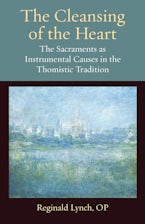- Home
- Thomistic Ressourcement Series
- religion
- The Cleansing of the Heart
Preparing your PDF for download...
There was a problem with your download, please contact the server administrator.
The Cleansing of the Heart
The Sacraments as Instrumental Causes in the Thomistic Tradition
Thomistic Ressourcement Series
Imprint: Catholic University of America Press
Recalling the Biblical and Patristic roots of the Church's sacramental identity, the Second Vatican Council calls the Church the 'visible sacrament' of that unity offered through Christ (LG 9). 'Sacrament' in this sense not only describes who the Church is, but what she does. In this regard, the Council Fathers were careful to establish a strong connection between the symbolic nature of the Church's sacraments and their effect on those who received them.
Reginald Lynch is concerned with the cleansing of the heart—a phrase borrowed from St. Augustine and employed by Aquinas, which describes the effects that natural elements such as water or bread have on the human person when taken up by the Church as sacramental signs. Aquinas' approach to sacramental efficacy is unique for its integration of diverse theological topics such as Christology, merit, grace, creation and instrumentality. While all of these topics will be considered to some extent, the primary focus of The Cleansing of the Heart is the sacraments understood as instrumental causes of grace. This volume provides the historical context for understanding the development of sacramental causality as a theological topic in the scholastic period, emphasizing the unique features of Aquinas' response to this question. Following this, relevant texts from Aquinas' early and later work are examined, noting Aquinas' development and integration of the idea of sacramental causality in his later work. The Cleansing of the Heart concludes by contrasting alternatives to Aquinas' theory of sacramental causality that subsequently emerged. The rise of humanism introduced many changes within rhetoric and philosophy of language that had a profound effect on some theologians during the Modern period. This book provides historical context for understanding the most prominent of these theories in contrast to Aquinas, and examines some of their theological implications.
Reginald Lynch, OP is a PhD student at the University of Notre Dame and holds an STL from the Dominican House of Studies
"The importance of what Lynch has accomplished in this work cannot be overemphasized. The scholarship is of the hightest quality. Simply put, there is no theological work within the last fifty years that treates this topic with as much clarity as Lynch does in these pages."
~Thomist

